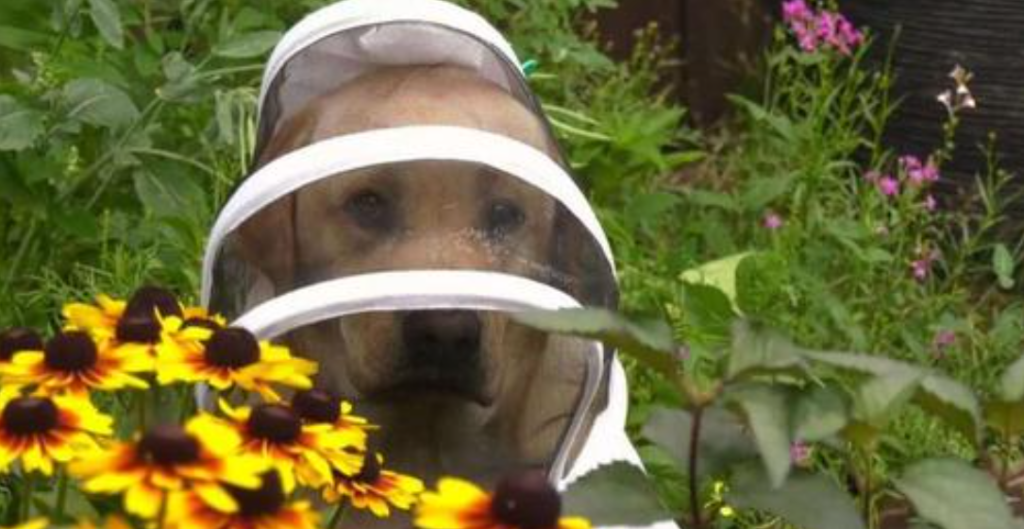Moose, the charming golden Labrador Retriever, harbors an unusual passion for beekeeping and all things honey. His dedicated owner, Tracey Brindley, recognized Moose’s keen interest in her beekeeping activities and felt a sense of responsibility for both her one-year-old canine companion and her beloved bees.
Residing in the scenic city of Edmonton, Alberta, Brindley is an avid backyard beekeeper. Observing Moose’s curiosity about her beekeeping endeavors, she grew concerned that her beloved “helper” might inadvertently fall victim to a bee’s sting. Determined to keep Moose safe while allowing him to be part of her backyard adventures, Brindley devised an ingenious solution, a custom-made beekeeper outfit, exclusively tailored for Moose.
Moose’s delight at participating in his mom’s beekeeping escapades was undeniable. Brindley affectionately shared her thoughts, expressing that Moose’s enthusiasm might eventually lead him to become an integral part of the honey delivery process in their neighborhood.
While Moose’s beekeeping attire is a testament to his devotion to his owner’s hobby, he is not the first canine to don a specialized beekeeper suit. Another remarkable instance can be found in Bazz, a black Labrador residing in Australia. Bazz’s owner, Josh Kennett, recognized a unique talent in his beloved companion and embarked on a distinct mission, training Bazz to detect American foulbrood disease, a devastating ailment with the potential to devastate bee populations if not identified early.

The challenge faced by Kennett was distinct from his counterparts in the United States. While apiary dogs in the US successfully sniff out diseases, Kennett had to surmount the hurdle of safeguarding Bazz from bee stings. His solution was equally unique, crafting a bespoke protective suit that enveloped Bazz from head to toe.
Kennett elaborated on the necessity of such suits in Australia, highlighting the milder climate and the absence of harsh winters that necessitate greater protection for dogs engaged in beekeeping activities. He explained: “Their winters are far colder than ours, with snow over the top of beehives. We don’t have that situation here in South Australia. So I’ve tried to develop a suit the dog can wear and hopefully avoid being stung”.
The journey to create a functional and comfortable suit for Bazz was a laborious one, but the persistent efforts paid off when a working prototype was achieved. Bazz successfully navigated through the challenging task of detecting infected beehives while clad in his distinctive, one-of-a-kind beekeeper suit.
Moose and Bazz’s tales serve as endearing examples of the unique bonds between humans and their canine companions, demonstrating how shared passions can lead to extraordinary innovations, safeguarding both dogs and the essential work they contribute to beekeeping endeavors.
